This lesson on music theory will focus on the A melodic minor scale, which is a diatonic scale that starts and ends on A. The purpose of creating melodic minor scales was to assist with melodies. The ascending melodic minor scale is identical to a major scale, with the exception of a flattened third, whereas the descending melodic minor scale has the same notes as a natural minor scale.
Contents
NOTES ON THE A MELODIC MINOR SCALE
The A melodic Minor Scale notes ascending are: A, B, C, D, E, F#, G#
The scale notes of the A melodic minor descending are: A G F E D C B A
A MELODIC MINOR INTERVALS
The melodic minor scale is similar to the natural minor scale, with the exception of a raised 6th and 7th note by a semitone (half step) while ascending. However, while descending, the melodic minor scale is identical to the natural minor scale. This alteration changes the minor 2nd interval between the 5th and 6th notes to a major 2nd interval. There is another major 2nd between the 6th and 7th notes. A major 2nd is equivalent to a tone or a whole step. For instance, E-F# is a whole step, and F#-G# is also a whole step. The diagram below displays one octave of the A melodic Minor scale with labeled intervals. It’s important to note that these intervals remain the same for all ascending melodic minor scales.

The descending melodic minor scale has the same intervals as a natural minor scale, which are displayed below.

THE MELODIC MINOR SCALE FOMULAR
The melodic minor scale formula is derived from the natural minor scale, but with a distinction in the ascending and descending patterns.
While ascending, the 6th and 7th degrees are raised. However, when descending, these degrees are lowered to align with the natural minor scale formula.
HOW TO PLAY THE A MELODIC MINOR SCALE
On piano
To play both the ascending version of the melodic minor scale, you can refer to the diagram below. The fingerings are labeled beneath the scale.

To play the A melodic minor scale in desending, you can refer to the diagram provided below.

On guitar
The melodic minor scale can be played in various positions on the guitar. The standard position of the scale begins on an A note. This shape can be shifted up and down the neck to play various ascending melodic minor scales.
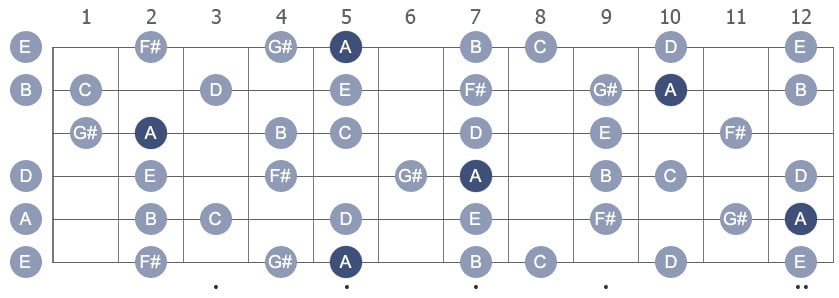
THE KEY SIGNATURE OF THE A MELODIC MINOR
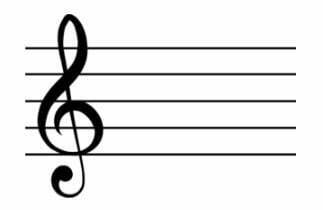
The melodic minor scale is commonly used in compositions that are in a minor key. For instance, if we play the A melodic minor scale, our piece will be in the key of A (natural) minor. It’s important to note that A minor is the relative minor of the C major scale. Both of these scales have no sharps or flats in their key signature.
A MELODIC MINOR ON CLEFS
Below is the A melodic harmonic Minor Scale written in the treble clef, bass clef, alto clef and tenor clef including both ascending and descending.
Treble Clef
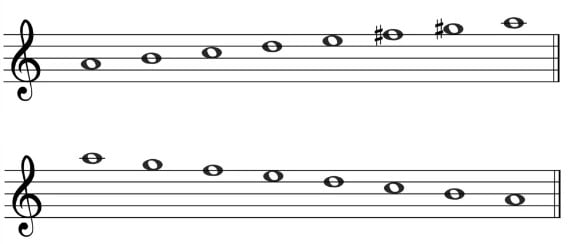
Bass Clef
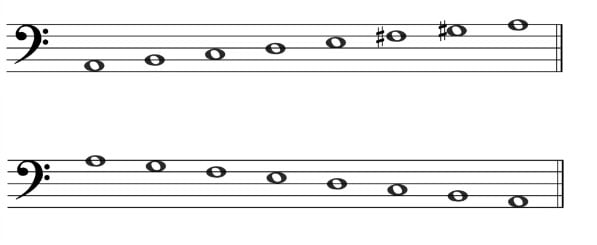
Alto Clef
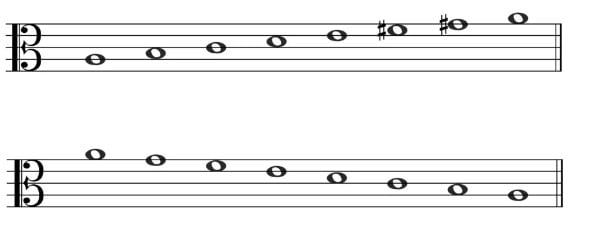
Tenor Clef
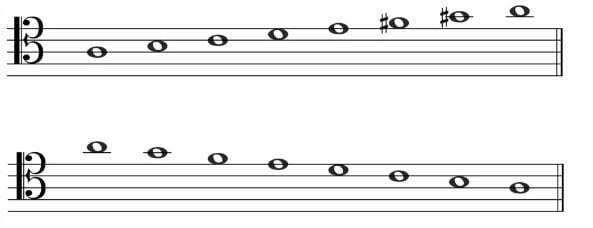
If you’re interested in learning more about music scales, chords, and musical theory, visit our Guitar tunio today
